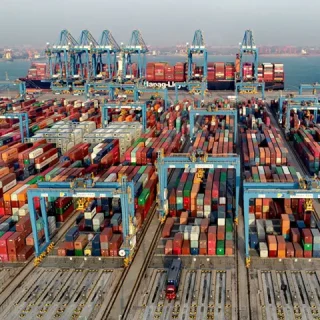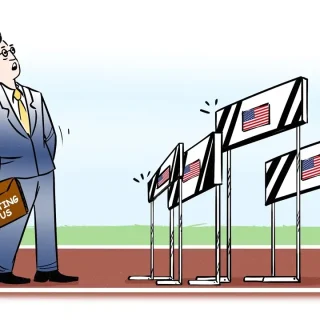In a significant economic development, China witnessed a historic outflow of foreign investment in the last quarter, reflecting growing global concerns about the health of the world’s second-largest economy. According to the latest data from the State Administration of Foreign Exchange (SAFE), China’s direct investment liabilities in its balance of payments fell nearly $15 billion in the April to June period, marking a rare negative turn in this financial metric. This downturn continued with a total reduction of about $5 billion in foreign investment during the first half of the year, suggesting a potential first annual net outflow since records began in 1990.
The decline in foreign capital influx comes after foreign investment in China peaked at $344 billion in 2021. A combination of economic slowdown, escalating geopolitical tensions, and a shift towards electric vehicles has prompted several international companies to reconsider their investments in China. Some have reduced their operations, while others have withdrawn entirely, especially as foreign automobile manufacturers struggled to adjust to the rapid advancements in China’s electric vehicle market.
Despite Beijing’s intensified efforts to attract and retain foreign capital, last year saw the smallest increase in foreign investment on record. The Chinese government has been keen to project openness and appeal to global businesses, encouraging them to bring advanced technologies and counteract pressures from the US and other countries to decouple economically from China. However, these efforts seem yet to reverse the trend, as the economic policies of advanced economies diverge from Beijing’s, with many raising interest rates while China lowers them to boost its economy.
In stark contrast to the diminishing foreign investment, Chinese outbound investment has surged, reaching a record $71 billion in the second quarter alone, an increase of over 80% from the previous year. This investment primarily targets the development of electric vehicle and battery manufacturing facilities overseas.
Additionally, discrepancies in China’s trade surplus calculations have continued to widen, reaching a record $87 billion in the second quarter and totaling nearly $150 billion for the first half of the year. This growing gap, previously highlighted by the US Treasury, prompted calls for China to provide clarity on the divergence, which the International Monetary Fund attributes to varying methodologies in recording exports and imports.
This economic landscape indicates a complex period for China as it navigates internal challenges and shifts in global market dynamics, affecting both foreign investment in the country and its own investment strategies abroad. As China adjusts its economic strategies, the global business community remains watchful of the impacts these changes will have on international economic relations and the global economy.










